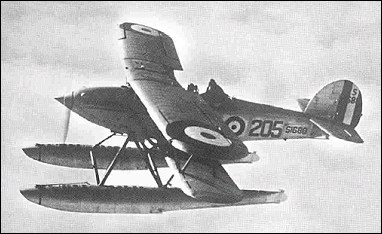 |
Hawker Osprey1929 |  |
| RECONNAISSANCE, SPOTTER AIRCRAFT | Virtual Aircraft Museum / United Kingdom / Hawker |
 |
The Osprey was a two-seat naval fighter-reconnaissance biplane, developed from the Hart but with additional strengthening for catapult launching, folding wings for storage on board ship and naval equipment. The first prototype flew in 1930 and was eventually followed by 37 Osprey Mk I, 14 Mk II, 52 Mk III and 26 Mk IV production aircraft; the Mk IIs later being modified into Mk Ills with Fairey Reid propellers and other refinements. A small number of the genuine Mk Ills were constructed of stainless steel, one of which, according to Hawker records, was exhibited in skeleton form at the 1932 Paris Show. Standard power plant for the Mk Is, IIs and Ills was the 423kW Rolls-Royce Kestrel IIMS, giving a maximum speed of 257km/h as a landplane. Seaplane Ospreys had twin floats, although an interesting but unsuccessful experiment was carried out with one aircraft fitted with a central main float and wingtip stabilising floats. The Mk IV was powered by a 477kW Kestrel V engine. Ospreys entered service with the FAA in 1932 and eventually flew from aircraft carriers, cruisers and other warships. In 1934 one RAF squadron took delivery of four Ospreys for communications work, and in the same year HMS Sussex went to Melbourne as part of the Centenary celebrations carrying an Osprey. By mid-1935 several ships of the Second Cruiser Squadron of the Home Fleet had been issued with Ospreys and the new cruiser Ajax had received two for service with the Mediterranean Command. These remained in service until 1939.
Meanwhile the Swedish vessel Gotland had received Mercury-powered Ospreys, known as Nohabs. These remained operational as naval co-operation aircraft alongside Heinkel He 5s until 1940. Three Ospreys were also delivered to Portugal and Spain, although it is uncertain whether the Spanish aircraft was among the 57 machines sent by Britain to the Republican Air Force during the Civil War.
|  COMPANY PROFILE | ||||||||||||||||||||||||||||||||||||||||||||||||||
 |

|



